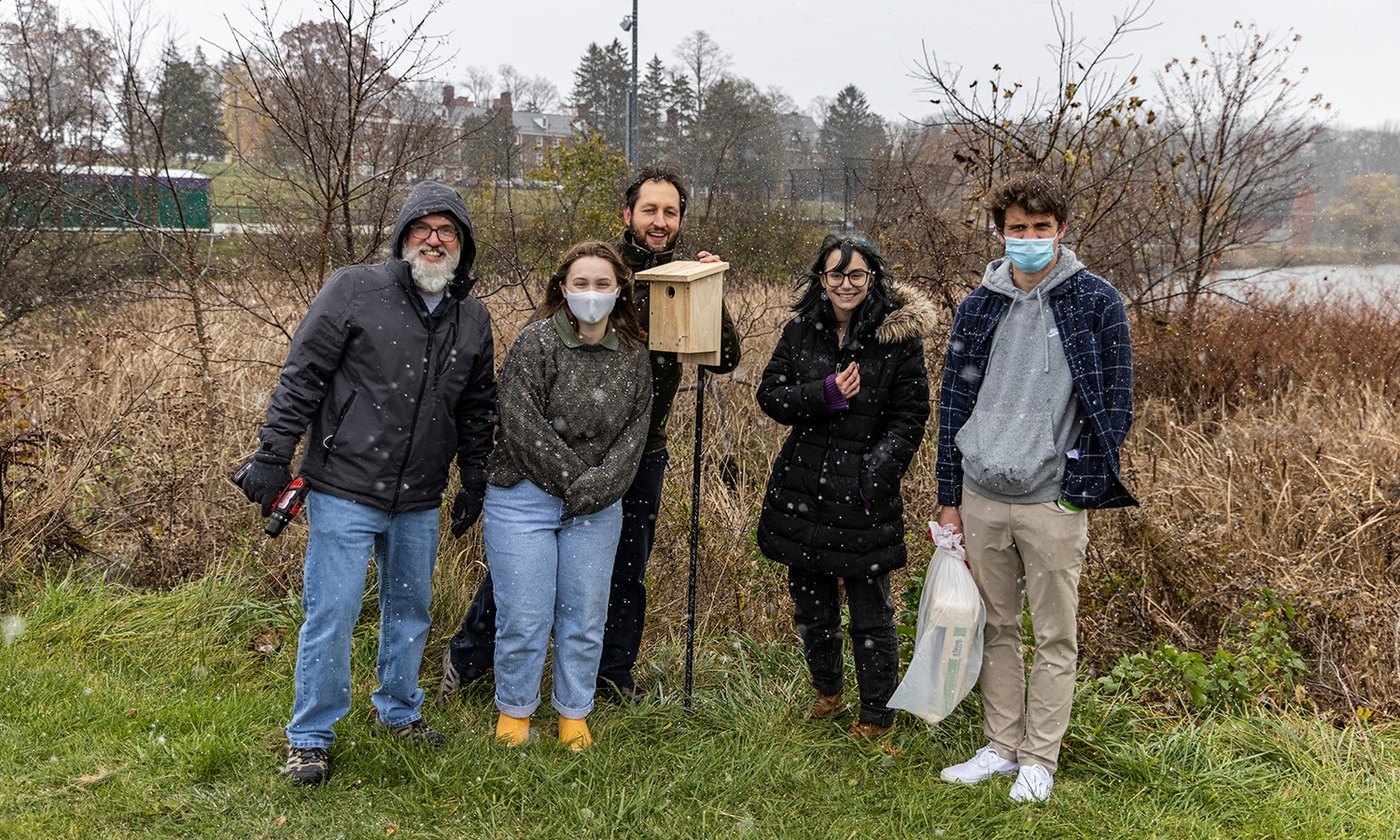
NEW RESIDENCE HALL ON CAMPUS: BLUEBIRD BIRDHOUSES
11 January 2022 • Sustainability New Residence Hall on Campus: Bluebird Birdhouses
Eight birdhouses have been built on campus to attract the Eastern Bluebird, the official bird of New York State.
Departments across campus have collaborated to establish birdhouses suitable for the Eastern Bluebird.
Students in “3D Design” with Associate Professor of Art and Architecture Jeffrey Blankenship constructed the birdhouses, alongside shop technician Steven Blanchard. Then, Professor of Biology Mark Deutschlander, an expert in ornithology and advisor to the HWS Birding Club, continued the task of siting the appropriate location with club members.
Several factors were considered during the siting process, such as habitat suitability for the Eastern Bluebird, aesthetics of placement, logistics of maintenance and visibility to the campus community.
Bluebird Birdhouse Setup
Please Check the date is not empty and it is in the format MM/DD/YYYY
Members of the Birding club, including President Kate Marthens ’22, Megan Geiger ’24, and Gunnar Sjostedt ’23, applied for funds from the Carver & DeLaney Environmental Project Endowment Award through the Office of Sustainability to purchase large metal poles and brackets to mount the birdhouses on campus. The club then met with Sustainability Manger Michael Amadori and Grounds Manger Drew Rojek to identify possible locations.
“An effort was made to locate the houses in some of the Grow Zones on campus,” Amadori explains. In 2019, the Office of Sustainability and Buildings and Grounds established Grow Zones – spaces on campus purposely left unmowed to create suitable habitat for native insects and pollinators. The final location placement was guided by Chief Photographer Kevin Colton, who is a member of the N.Y.S. Bluebird Society and a leader in their statewide nest-box trail system project to provide homes for Eastern Bluebirds.
“The new houses will also reinforce the Colleges’ commitment as a college chapter of the National Audubon Society,” Amadori says. The national campus program includes 150 colleges and universities that allows young leaders from diverse backgrounds to get involved in bird conservation.
The location of the houses can be found on this map. Students from the Birding Club will conduct ongoing observation and maintenance of the houses, including removing invasive species of birds that may take residence in the birdhouses and yearly cleanings.
